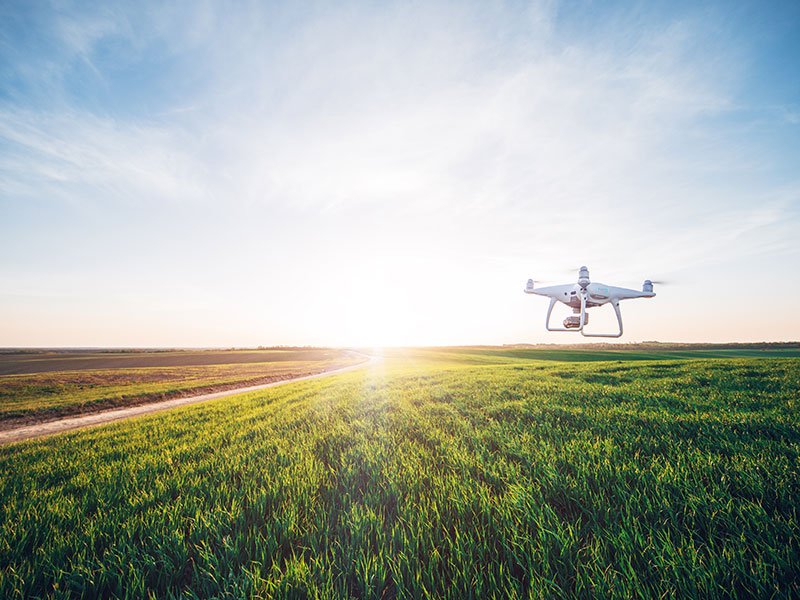Industry and governments are continually looking for efficiencies – opportunities to improve safety and productivity, while reducing environmental impact, response times and costs.
One of the biggest challenges to improving efficiencies is the location and roles of people. When humans are located onsite or are key to frontline operations or processes, the result is often increased costs and complexity, and a simultaneous reduction in safety through exposure. History has shown that as soon as a machine can take the place of a human, it will.
As we’ve seen through defence applications, unmanned aerial vehicles (UAVs) have the potential to revolutionise many industry sectors including emergency services, security, energy, transport and logistics, resources and infrastructure by delivering commercial advantage and sustainability pathways to organisations that adopt the new technology.

Need to move urgent medical supplies like blood or a donor organ to a hospital hundreds of kilometres away? Need to assess damage after a fire or flood without sending in a spotter crew on the ground? How about monitoring borders, spotting sharks or mapping remote terrain?
Activities like these can be done easier, safer, and more efficiently with minimal human intervention using a combination of drone technology, satellite communication and software that enables livestreaming of high-quality video and data.
Big ideas take off
We’re already doing these things; the challenge now is to do them at scale. So, what needs to change as we move towards operating at a larger scale?
Harvest is a leader in technology that transforms the way organisations operate in remote locations. In partnership with Carbonix, which provides reliable, high quality, fully integrated Remotely Piloted Aircraft Systems (RPAS) solutions, we’ve been able to create innovative effective solutions to transmit valuable data from the air.
Harvest is providing technology that enables transmission of audio, video and operational data via a small form factor antenna over a satellite data link to allow Carbonix aircraft to communicate in real time across long distances, outside cellular coverage and beyond what a radio could support.
Integrating lightweight hardware onboard the drone with sophisticated encryption, compression, and transmission protocols allows Harvest to reduce latency and maximise use of available bandwidth to achieve real-time telemetry and payload data from the drone to the operator, anywhere in the world.
This means aircraft can be operated and monitored remotely.
For example, a pilot can supervise and adjust a drone’s flight from a control centre in a CBD office while the drone is operating over remote terrain on the other side of the country – or the world.
Networked, efficient satellite connectivity also allows “one-to-many” operations, where one pilot can monitor multiple aircraft in multiple locations.
This allows machines to take over the dull, dirty and dangerous tasks while letting humans undertake the skill-dependent supervisory roles.
Setting the foundations
Increased demand will be the driver for innovation, but we need a strong foundation to support growth and innovation.
Regulation needs to keep up with where we’re at with the industry and unmanned aircraft can’t be treated the same way as manned.
As technology manufacturers tackling the challenges in this emerging space, these are some of the foundations we’d like to continue to see prioritised:
- A regulatory framework that, in collaboration with strong industry leadership and representation, strikes the right balance between assuring safety and allowing the freedom to experiment, develop, and pioneer new applications
- A training regimen that can upskill individuals to take on the multiple roles around operating and supporting RPAS flights at scale
- A culture where information about drones and their positive impacts is communicated to and understood by the public so that social acceptance will allow growth without reactionary, sensationalised pushback
- A reliable flying platform with high levels of engineering assurance and quality control, that is capable of carrying the weight of sophisticated high-resolution sensors over meaningful distances to cover large areas in a single flight
- A communications network independent of ground infrastructure that allows multiple nodes to communicate at high bandwidth, securely, in real time
- Skilled operators organised to launch, retrieve, maintain, and remotely operate a large fleet of aircraft (each with the characteristics summarised in the fourth point)
The market is already moving towards increased automation and reduced human intervention and we expect to see continued movement towards the use of unmanned aerial vehicles. Business will make the move when it’s cost-effective and accessible.
Collaboration is key
Projections are nothing without action. And this action must come from all the stakeholders and actors in this burgeoning ecosystem.
It’s up to all of us – Original Equipment Manufacturers (OEMs), satcom terminal manufacturers, connectivity partners, software solution providers, regulators, Air Navigation Service Providers (ANSPs), training organisations, compliance and rules specialists, regulators, policy makers and end-users – to work together to safely overcome the challenges that currently hold back the sector.
In turn, as a collective ecosystem, we can demonstrate the practical solutions this sector will usher in and, perhaps most importantly, its safety.
Damiain Brown is the chief product officer at Harvest Technology Group, and Dario Valenza is the founder of Carbonix
Do you know more? Contact James Riley via Email.
